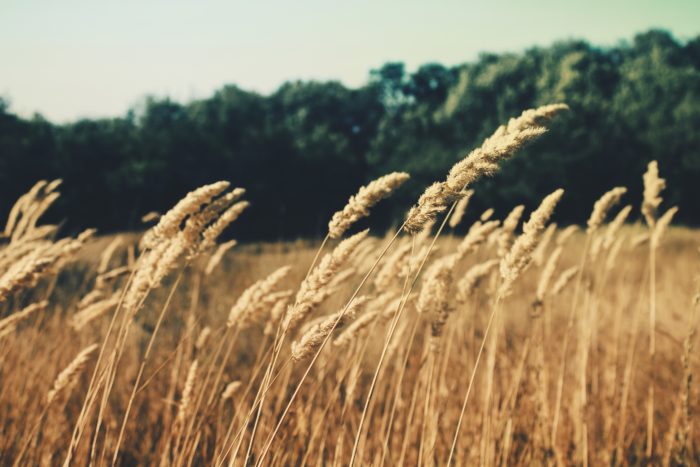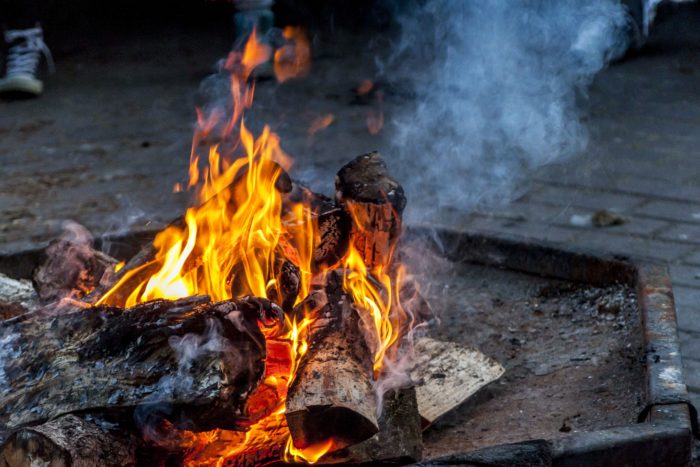Whenever I tell people of my interest in Ayurveda, I often explain doshas. Almost immediately, people ask me, “Well, what dosha am I? Can you tell?” Just the other day, colleagues of mine were circling around my lab chair asking for more information about their dosha and what it means. But you don’t have to be an Ayurvedic doctor or expert to get to know your primary doshas and how to balance these energies!
Until about two years ago, the words Ayurveda and dosha were foreign to me. But the amazing journey that is life somehow landed me on the beach in Kerala, India studying under Mata Amritanandamayi, affectionately known as Amma, the Hugging Saint. During my time immersed at Amritapuri (Amma’s ashram), I learned more about the role of spirituality in healing and integrating ancient wisdom into modern healthcare practices. In fact, I found the journey and learning so fascinating that my research developed into my graduate school thesis (Thank you, Columbia University!). I believe that expanding one’s heart and opening the mind to Auyrvedic self-care practices can be transformative. But, before delving deep into Ayurveda and its wisdom, it is necessary to grasp some of the basics. And for that, here is a lesson in Ayurveda 101: Identifying your dosha and utilizing that knowledge to enhance your wellbeing!

Believed to be condensed from different combinations of the primal elements earth, water, fire, air, and ether, doshas are the life energies behind bodily functions. Vata, Pitta, and Kapha are mind-body types that express unique blends of physical and mental characteristics. Each person has their own dominant dosha, but many possess a combination of these elemental forces. I first learned of doshas through a friend. In fact, during the conversation my two friends disagreed on my primary dosha—was I more Vata or Pitta? Unsatisfied by their inconclusive classification, I took it upon myself to dig deeper into each dosha and decide. After deciding that I was primarily Vata, it turns out that my secondary dosha is Pitta.
Upon meeting my Ayurvedic doctor for the first time, she held my hands. She looked closely at the texture of my skin and nails. She analyzed my build. She examined my tongue. She ran her fingers through my hair. Then, she took my pulse. “Vata!” she proclaimed. Consisting of the elements air and ether, Vata means to blow or move like the wind.

Often, those with a Vata constitution are thin, tall, and have a light frame. They often have dry hair, skin, and nails. Vatas welcome new experiences and are often gregarious, friendly, and energetic. Sometimes overwhelmed by other energies, a Vata responds to stress by wondering what he or she did wrong. Since becoming knowledgeable in Ayurveda, I find it hard to think that anyone would find me primarily Pitta or Kapha! While Ayurveda has numerous recommendations for balancing each dosha, it is best for Vatas to wake up within a half hour of the sun rising (though this is a work in progress for me!) and should treat themselves to self-massage (abhyanga). Though I don’t necessarily need a reason to indulge in a relaxing oil massage, Vatas can benefit enormously from integrating oil massages into their routine! For Vata-pacifying abhyanga, I use organic (and heated up) sesame oil because it is hydrating and warming.
The second dosha is Pitta. Pitta dosha is predominantly made up of fire with some water. Pittas have a muscular, medium build. They are often sharp and discerning with a strong appetite. They tend to value organization and precision. A Pitta’s skin is sensitive and may be acne-prone. Unlike Vatas, Pittas can be irritable and blame others when stressed. I’m sure we all know more than a few Pittas! They have a fiery energy and speak with purpose.

Since Pitta is my secondary dosha, I balance this energy by incorporating cooling food, such as leafy greens and fruits like cucumbers, into my diet. When my Pitta energy is really strong, I practice restorative yoga. My go-to: Yoga Nidra with calming Ujjayi breath. Even if you do not primarily identify with the Pitta dosha, it is still important to balance because this energy is responsible for digestion, metabolism, and energy production.
Lastly, the third dosha is Kapha. The Kapha dosha consists of the water and earth elements. Kapha tends to be stable and heavy. They are steady and consistent, like the earth.

Kaphas have a slow metabolism and often gain weight easily and have trouble losing it. Their hair and skin are smooth and oily. They are often slow-moving and converse simply. Lacking Pitta’s fire, Kaphas are often forgiving and patient. So when it comes to stress, it is no wonder that the gentle Kapha does not like to deal with it. As a result, they tend to withdraw. To balance Kapha energy, I find it best to shake it up! It is important for me to stimulate my senses and seek out new experiences. When I feel my Kapha balance out of whack, I use invigorating essential oils–lemongrass, orange, and bergamot–I and avoid taking naps. If you identify with Kapha energy, establish an exercise regimen, and try dry brushing (garshana), which stimulates circulation.
In Ayurveda, health is the balance between mind, body, and environment. It is possible to achieve and maintain a vibrant life by identifying your dosha and following a lifestyle that supports your nature. To me, Ayurveda practices can occasionally be like understanding your horoscope. Sometimes very fitting, but sometimes missing the mark. As always, do what feels best for your body and mind.
Do you identify with any of the three doshas? How do you balance your mind and body?
Also by Leigh: DIY Vegan Healing Balm
Related: I Tried It: Dosha Balancing Consultation for Glowing Skin
Quiz: Which Chakra Do You Need to Balance?
Get more like this—Subscribe to our daily inspirational newsletter for exclusive content!
__
Photos: Leigh Winters, Zugr, Tirza van Dijk, & Nikita Velikanin via Unsplash




